| View previous topic :: View next topic |
| Author |
Message |
Ken
Joined: 14 Jul 2011
Posts: 54


|
 Posted: Apr 05, 2022 22:43 Post subject: Jade, chalcedony or???? Posted: Apr 05, 2022 22:43 Post subject: Jade, chalcedony or???? |
|
|
I've taken this stone into museums, universities and even to about 3 different rock/mineral shows, and no one can say for sure what this is. When they first see it, most will say it's some sort of altered jade but none of the info adds up so they say it could be chalcedony or maybe even a new mineral. The stone is slightly magnetic, hardness is 7.5, SG 2.571, RI 1.630, streak: green is green, and brown is white. Some think it may be jade because several other stones found in that area have sodium in them. I have another piece that is over 2 pounds, I had an xrd analysis done and I'm told that it shows that the brown and the green areas might be 2 completely different minerals. Anyone have a clue about this one?
| Locality: | | Riverside County, California, USA |  |
|
| Description: |
|
| Viewed: |
6631 Time(s) |
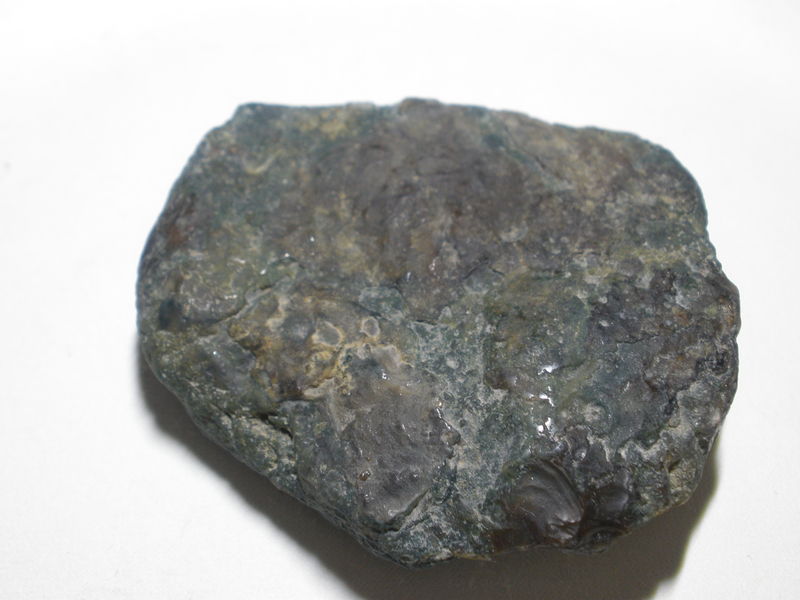
|
| Description: |
|
| Viewed: |
6627 Time(s) |
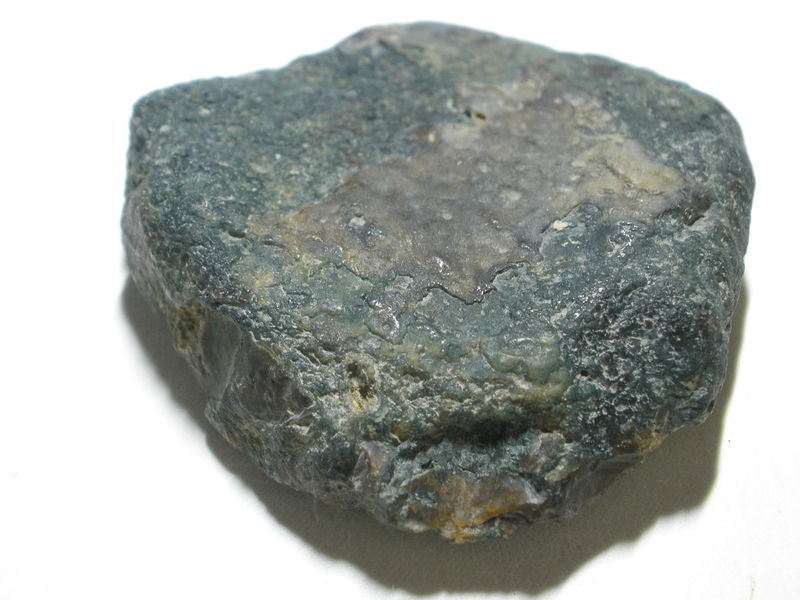
|
| Description: |
|
| Viewed: |
6631 Time(s) |
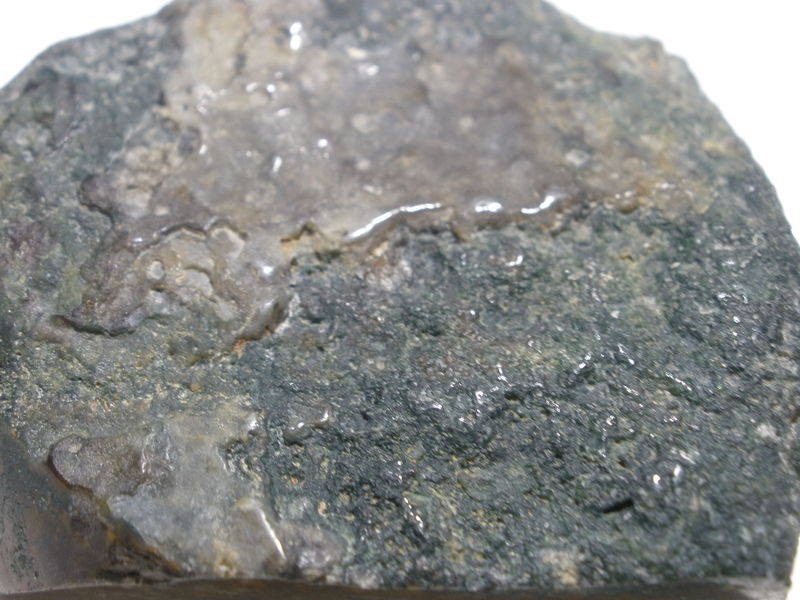
|
| Description: |
|
| Viewed: |
6647 Time(s) |
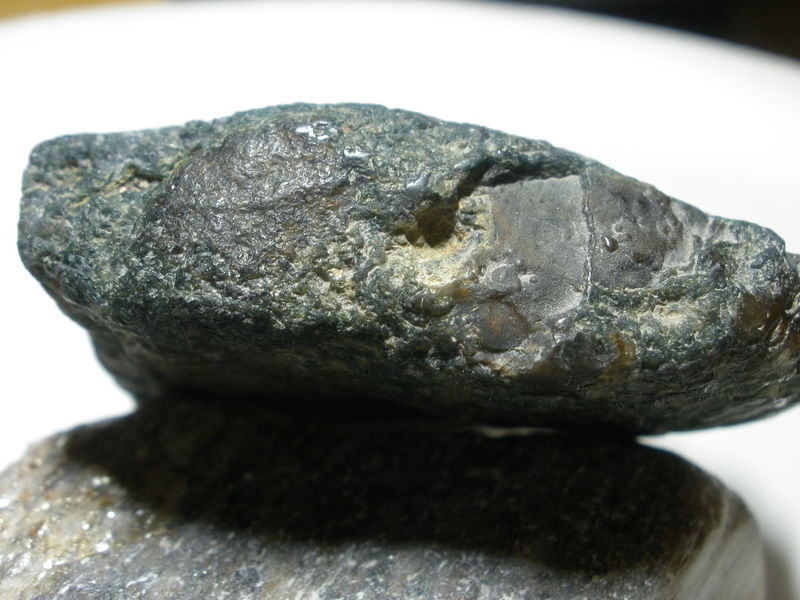
|
| Description: |
|
| Viewed: |
6639 Time(s) |
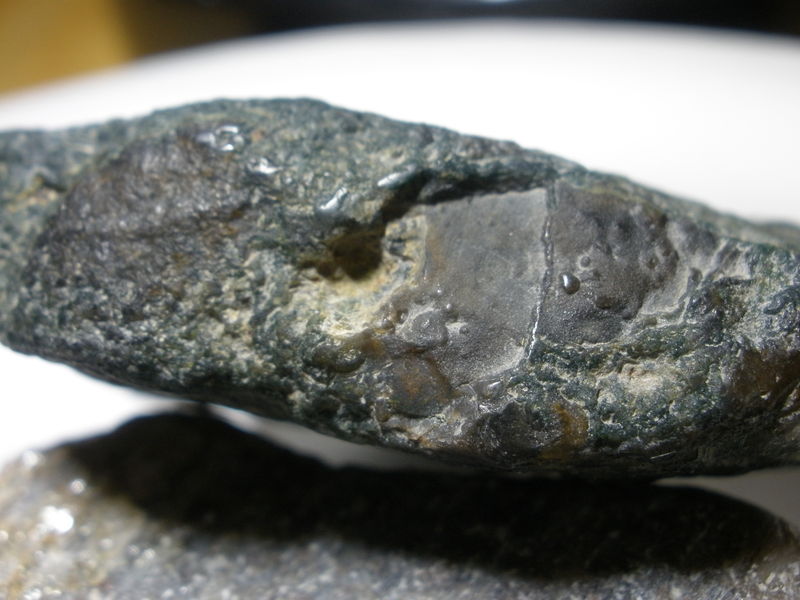
|
| Description: |
|
| Viewed: |
6657 Time(s) |
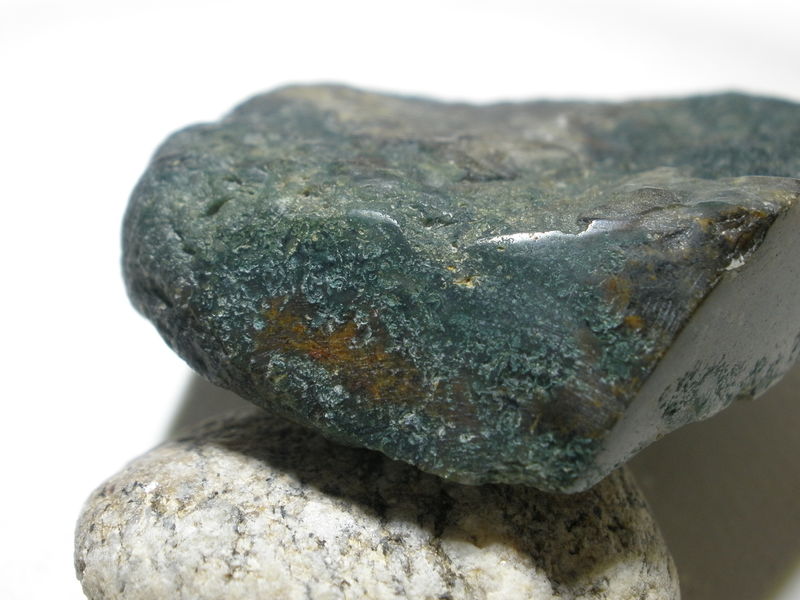
|
| Description: |
|
| Viewed: |
6622 Time(s) |
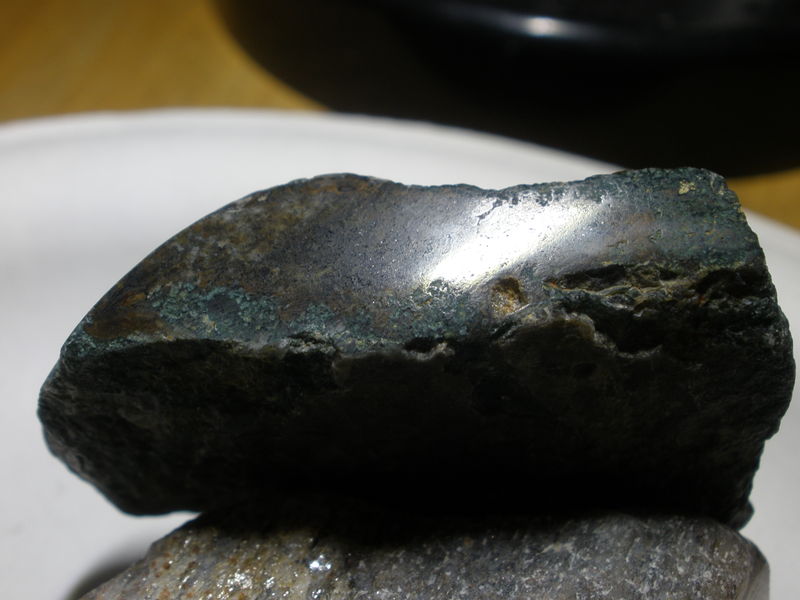
|
| Description: |
|
| Viewed: |
6636 Time(s) |
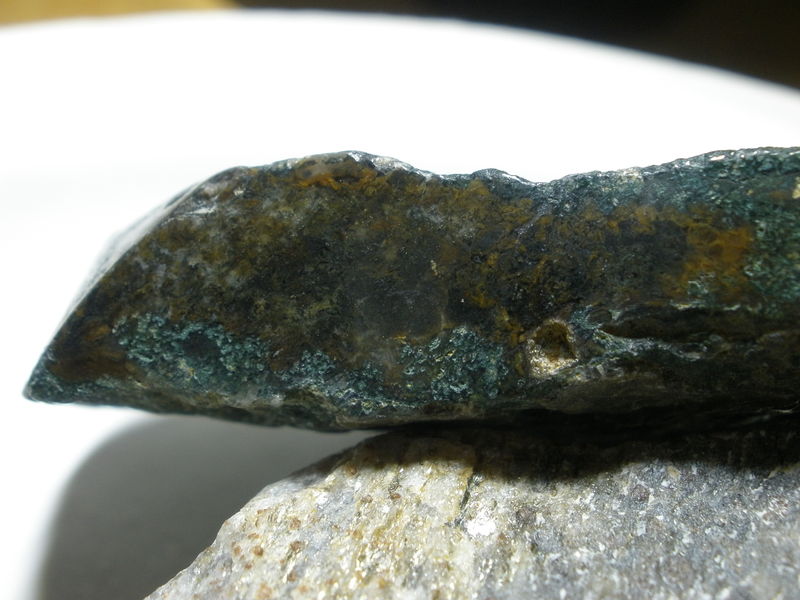
|
| Description: |
|
| Viewed: |
6623 Time(s) |
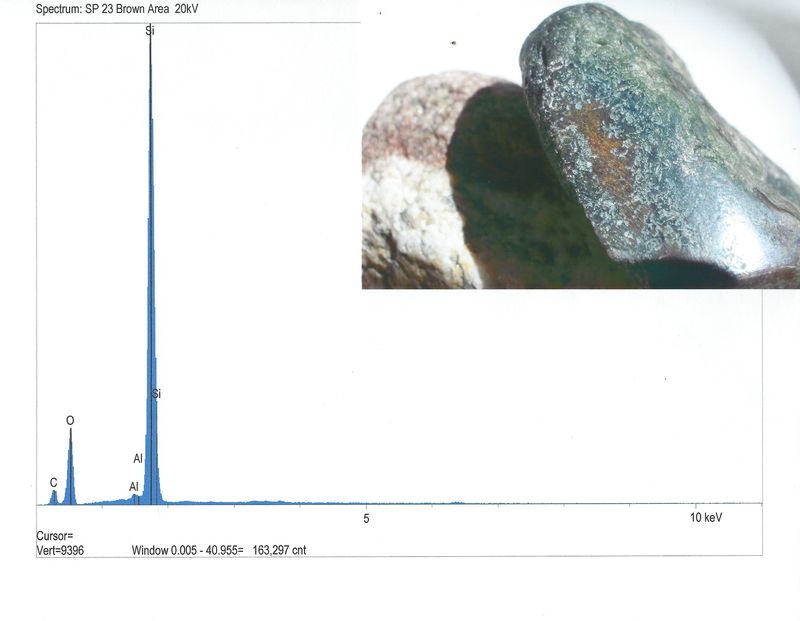
|
| Description: |
|
| Viewed: |
6637 Time(s) |
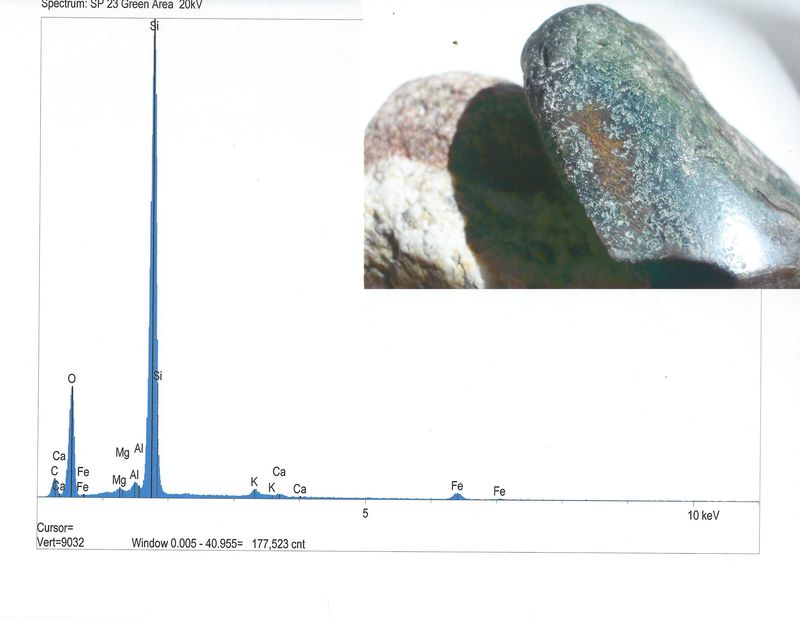
|
|
|
| Back to top |
|
 |
alfredo
Site Admin

Joined: 30 Jan 2008
Posts: 1012



|
 Posted: Apr 06, 2022 05:07 Post subject: Re: Jade, chalcedony or???? Posted: Apr 06, 2022 05:07 Post subject: Re: Jade, chalcedony or???? |
|
|
Thanks for the detailed description - If everyone gave this much info on stuff that needed an ID, our task would be much easier!
The information you give (the photos, the density, the analysis) points to this being one of the many varieties of massive fine-grained quartz: jasper, chert, chalcedony... all primarily composed of silica (SiO2). I don't have any doubts about that at all. The only measurement that could be slightly off is the hardness - more likely to be 7 than 7.5.
The various color shades are caused by different impurities, the greenish for example being caused by traces of some iron-bearing silicate. If pure, it would be colorless or white. It would probably take a good polish, if you are into the lapidary arts.
|
|
| Back to top |
|
 |
Ken
Joined: 14 Jul 2011
Posts: 54


|
 Posted: Apr 06, 2022 23:30 Post subject: Re: Jade, chalcedony or???? Posted: Apr 06, 2022 23:30 Post subject: Re: Jade, chalcedony or???? |
|
|
| I thought the hardness was a bit high too, but it was confirmed by two geologists, if you try to scratch it with a #7 test pick it will just leave a silver mark that you can wipe away with your finger. The large piece has the same stats as the small piece. I had an xrd analysis done on both colors of the large piece and got some very strange results, I'll round up the photos and post it later. I do agree with your take on the quartz Alfredo, thanks.
|
|
| Back to top |
|
 |
alfredo
Site Admin

Joined: 30 Jan 2008
Posts: 1012



|
 Posted: Apr 07, 2022 03:03 Post subject: Re: Jade, chalcedony or???? Posted: Apr 07, 2022 03:03 Post subject: Re: Jade, chalcedony or???? |
|
|
| It would be interesting to know what the H7 test pick is made out of. If it leaves a silver mark then it must be made out of metal, and the only metals that reach that hardness are osmium and iridium. I doubt anyone would use such extremely expensive metals (several times the price of gold) for a hardness test pick when a simple bit of broken quartz (H7) would do the same job! Well, there are some tungsten alloys or carbides that reach H7, but the fact that it leaves a silvery streak suggests that it is not some brittle carbide. So I suspect that the test pick is not H7 at all, but something softer.
|
|
| Back to top |
|
 |
Ken
Joined: 14 Jul 2011
Posts: 54


|
 Posted: Apr 07, 2022 21:58 Post subject: Re: Jade, chalcedony or???? Posted: Apr 07, 2022 21:58 Post subject: Re: Jade, chalcedony or???? |
|
|
I don't have a clue as to what the test picks are made of but all the ones that I've seen used look like the ones in the photo below. I've had a few specimens tested by geologist and gemologist and they all seem to be using test picks that are made of mostly of metals.
| Description: |
|
| Viewed: |
6432 Time(s) |
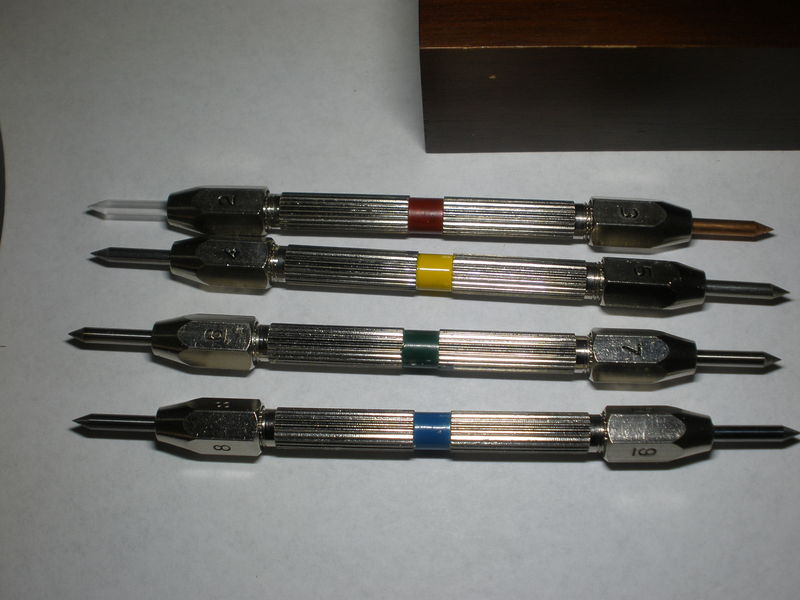
|
|
|
| Back to top |
|
 |
Pete Richards
Site Admin
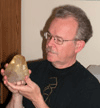
Joined: 29 Dec 2008
Posts: 845
Location: Northeast Ohio



|
 Posted: Apr 08, 2022 18:31 Post subject: Re: Jade, chalcedony or???? Posted: Apr 08, 2022 18:31 Post subject: Re: Jade, chalcedony or???? |
|
|
Ken, you have been rightly complimented for trying to do what you can to identify your specimens. But I'm afraid some confusion has crept in. Here are some questions and comments to try to clarify some things and perhaps help you to find the identifications you are looking for.
First off, you are asking mineral questions about what appears to be a rock. Mineral crystals have consistent properties within a crystal and very similar properties from crystal to crystal of the same mineral. Wherever you measure a mineral's properties, you will get about the same results. Rocks are composed of minerals, usually of several different kinds, and often of greatly different sizes. Unless you can be very sure which mineral in a rock you are testing, and that you are testing only one mineral, the results are not going to be reliable.
In several places you have referred to xrd analyses. This stands for X-ray diffraction, which measures the structure of a mineral. But you present spectra of chemistry, which xrd does not measure. What technique are you actually using? What kind of equipment? How was the sample chosen and prepared - or was it somehow done on the specimen itself? With any technique that is applied to a specimen like yours without taking off a sample, there is at least the problem of knowing exactly what the instrument was "looking at". Was it analyzing a single grain? Was that grain homogeneous and monomineralic at a microscopic scale, or was it a mix of several things? If it was a hand-held point-and-click instrument, what was it programed to look for? Using xrd to identify mixtures of minerals requires great skill, and expertise to know how seriously to take the results.
You are right to question the identification of polylithionite, a mica. If the analysis was based on structure (xrd), where is the mineral with its mica-like appearance? If it was based on chemistry (SEM-EDS or other techniques), lithium, an essential constituent of polylithionite, was presumably not detected because it is too light an element. How can an identification of polylithionite be reliable if it is not known that one of the essential components is present?!
As for your hardness probes, if the one for H=7 is rubbing metal onto a rock, I'd bet that the tip has lost its bit of quartz (or other mineral of hardness 7) and you are rubbing off the mounting metal, which is probably softer. It appears that the tips of your kit are replaceable; I'd look into a new tip.
Try to get a better understanding of details like these! Unfortunately, it is all too possible to get "information" from fancy technologies. But if they are used wrong, or the results are mis-interpreted, the information provided may have no value.
_________________
Collecting and studying crystals with interesting habits, twinning, and epitaxy |
|
| Back to top |
|
 |
Roger Warin

Joined: 23 Jan 2013
Posts: 1233



|
 Posted: Apr 09, 2022 07:15 Post subject: Re: Jade, chalcedony or???? Posted: Apr 09, 2022 07:15 Post subject: Re: Jade, chalcedony or???? |
|
|
Hello,
My question:
I have read that in chalcedonies and in agates, the quartz microneedles have a dimension between 50 and 100 nm.
In addition another phase of SiO2 is present = moganite (not beryl morganite).
I did not know this mineral.
As Pete points out, they are rocks and the nomenclature fluctuates.
What are the differences between agate and chalcedony?
Agate with undulating ribbons.
Chalcedony with linear ribbons.
It's not very subtle as a differentiation.
|
|
| Back to top |
|
 |
alfredo
Site Admin

Joined: 30 Jan 2008
Posts: 1012



|
 Posted: Apr 09, 2022 07:29 Post subject: Re: Jade, chalcedony or???? Posted: Apr 09, 2022 07:29 Post subject: Re: Jade, chalcedony or???? |
|
|
"In addition another phase of SiO2 is present = moganite (not beryl morganite)."
Roger, moganite is mainly present in younger chalcedonies as it is unstable. So chalcedonies from older geological formations don't have detectable moganite remaining.
"Agate with undulating ribbons. Chalcedony with linear ribbons. It's not very subtle as a differentiation."
I've always considered "agate" to mean chalcedony with banding, so that is an easily visible distinction. But I'm probably out of date. ;))
But anyway, varietal names have usages that vary and are a bit fuzzy, and there is no international scientific organization like the IMA making rules or approving names and definitions for varieties, so it's a bit of an anarchy, which is why some mineralogists avoid using varietal names whenever possible.
|
|
| Back to top |
|
 |
|





